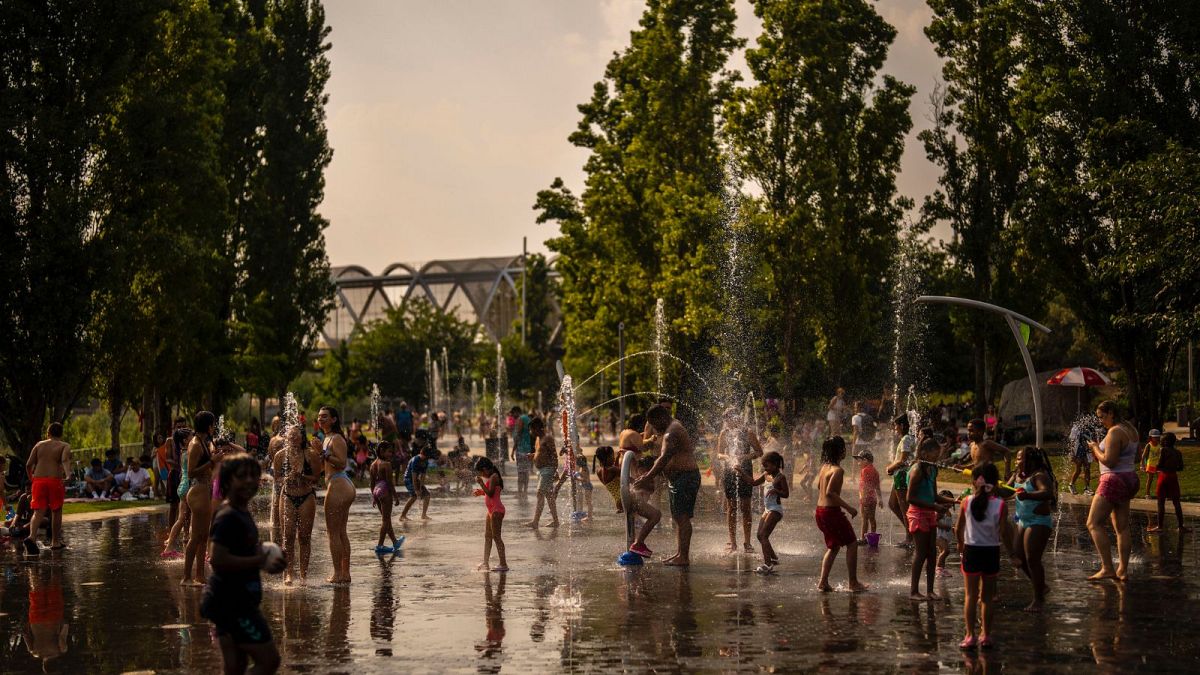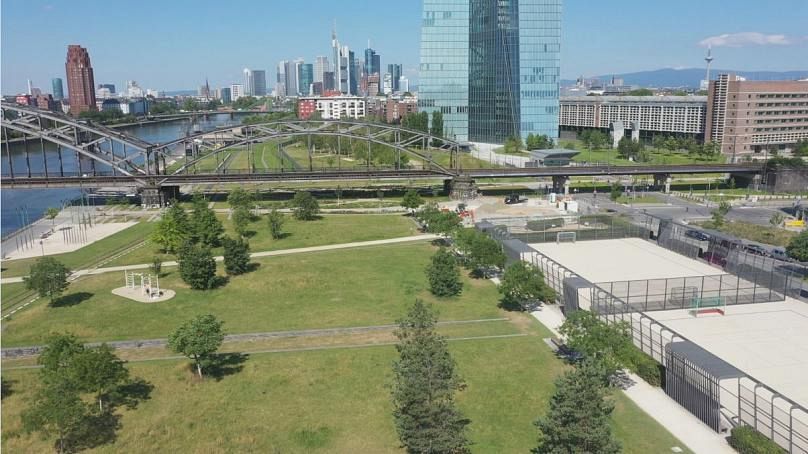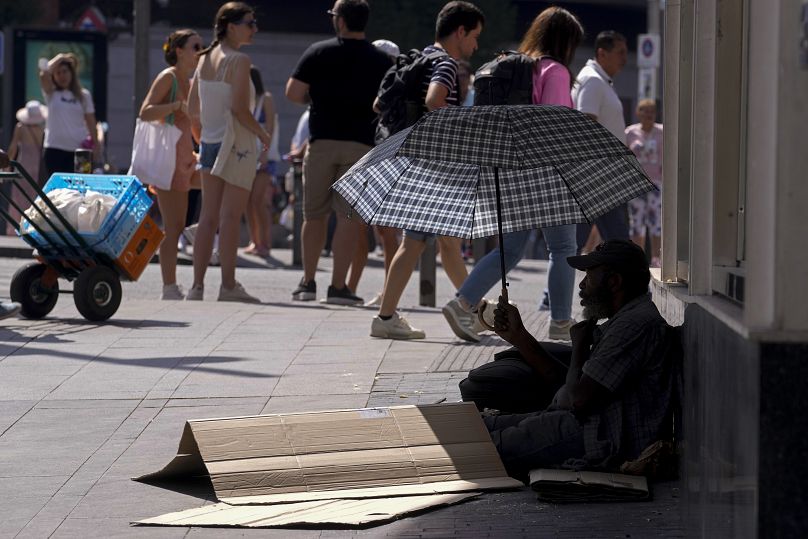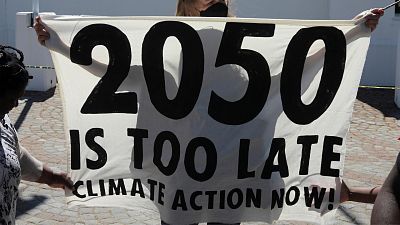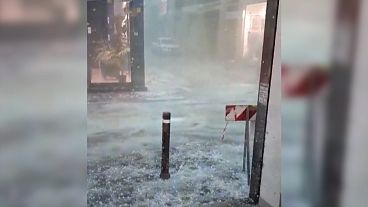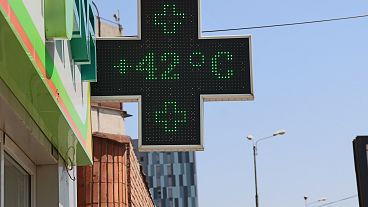With greater tree canopies, bodies of water and green buildings, it's not hard to help citizens cool down.
Much of Europe is suffering from the scorching effects of the Charon heatwave.
These extreme weather events are becoming fiercer and more frequent as a result of climate change, and for western nations at least, it has been a frightening glimpse into the future.
Record-breaking days have exposed how ill-equipped our cities are to handle plus 40°C plus temperatures. Conversely, they’ve also made us more appreciative of the parts that provide relief: the tree-lined streets, leafy parks, lidos and air conditioned public venues.
Due to what’s known as the ‘urban heat island’ effect, cities get much hotter than other parts of the country as heat is trapped between tall buildings and soaked up by asphalt and concrete. So it takes some innovative measures to cool them down.
From London to Lisbon, not all cities experienced the heatwave alike. So what can we learn from those that are leading the way on climate adaptation?
‘Cool streets’ in Vienna
Vienna is the most liveable city in the world, according to the Global Liveability Index from the Economist Intelligence Unit.
It scores high on the climate mitigation front too, as the Austrian capital first created a climate plan in 1999, and in 2018 became one of Europe’s first cities to set out a strategy to identify and combat urban heat.
When the heat becomes too overwhelming, residents can walk down streets that cool them down with ‘fog showers’ of fine mist.
These “cool straßen” (cool streets) are only one part of the municipal government’s public infrastructure plan. It has also introduced a new network of bike routes to make ditching your heat-producing (and polluting) cars more appealing, and has pledged to plant 4,500 new trees every year.
As well as adding new elements to the city, Vienna is holding on to what works. It still has more than 1,000 public drinking fountains, and has retained an extensive network of municipal pools first built in the 1920s.
Dubrovnik is another city with beautiful drinking fountains and, as it sits on the sea, has built doorways in its grand walls so residents and tourists have quick access when they need to cool off.
‘Ventilation corridors’ in Frankfurt
A former European City of Trees winner, Frankfurt is already doing well when it comes to green coverage. Trees can reduce surface temperatures by up to 12°C in summer, according to one recent satellite study, so having around 200,000 of them in public spaces is a definite boon to the financial capital.
As one of the warmest cities in Germany, some major reshaping has been needed too. Frankfurt has ventilation corridors, or ‘Luftleitbahnen’: stretches of land where there are no high buildings, or large stretches of trees, in order to draw in cooler air from surrounding areas.
The Luftleitbahn on the river Nidda, for example, allows up to 40,000 m3 of cold air per second to flow into the city on summer nights.
On top of this, Frankfurt requires certain new buildings to have ‘green’ roofs covered with plants. These can stay a staggering 40°C cooler on sunny days than their traditional black counterparts.
"Green roofs have numerous positive effects,” explains Lara-Maria Mohr from the Frankfurt Environment Department.
“They protect a building, they insulate and they cool it. This also saves costs.
“Noise is swallowed, fine dust is filtered by the plants and heavy rainfall effects are cushioned by the fact that the rain can be absorbed by the substrate.”
Climate shelters in Madrid
Hot summer days are expected in Spain, up to a point.
Last year the central city matched its all-time heat record of 40.7°C - which was only set the year before. The weather station that recorded it is more than 100 years old.
And while Mediterraneans have long adapted their work and social lives around the heat, with earlier starts and afternoon siestas - that’s not a liberty afforded to everyone. A 60-year-old Madrid street-sweeper tragically died from heatstroke last year, having collapsed at work the previous day.
Not all citizens experience heatwaves in the same way.
Residents in lower-income areas are also far less likely to have adequately insulated housing and access to cool, green areas.
To try and improve its record, Madrid opened climate shelters in air-conditioned public spaces such as libraries and community centres during the current heatwave, and set up an app to speed up entry to the city’s heavily subsidised municipal pools.
There’s also a long-term strategy to cool the city down. Under the 2019 ‘Madrid Island of Colour’ plan, a 75km long ‘green belt’ of forest is being built around the capital. Thermographic images from nearby areas show that ground temperatures have already been reduced by 2°C in two years, Politico reports.
What are the best ways to cool cities down?
There are many other ways cities are holding back the mercury on too-hot days. In Nuremberg, for example, tram lines have been covered with grass to cool them down.
While Norwich architects have built 100 social housing properties oriented north-south, with horizontal shades over south facing windows, to keep out the worst of the heat. Goldsmith Street is a rare example, in the UK, of homes made efficient for both summer and winter.
Better housing and humane built environments, green transport, trees and bodies of water; these are the key tenets of climate-adapted cities. But with such different climates and historic features, how do European leaders and urban planners know what to do exactly?
More trees are a win on multiple fronts. But it helps to know, for example, that it takes 40 per cent on-street canopy cover to really maximise the benefits of what green city planning expert Jon Burke calls “nature’s most advanced air conditioning technology.”
There are key calculations to be made about what are also, obviously, aesthetic improvements. The C40 Cool Cities Network is one organisation working along these lines. It has helped develop a ‘Heat Resilient Cities’ tool, which enables decision-makers to quantify the exact benefits of specific parks and green infrastructure, rivers, lakes and cool and vegetative surfaces.
